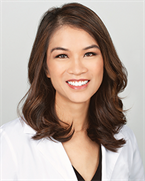ASLMS / FDA Session Summary
September 6, 2019

Dr. Kachiu C. Lee,
Director of Government
Communication and Education
ASLMS has been collaborating with the FDA for years to provide educational meetings at the FDA. The goal of the meetings is to provide an unbiased educational forum and two-way exchange of information about lasers and related technology and the challenges of bringing technology forward.
On September 6, 2019, ASLMS/ASDS held a webinar with the FDA on Clinical Scales and their Potential Role in Dermatology. Drs. Carolyn Jacob, Sara Dill, and Eric Bernstein presented topics on acne, fillers, neuromodulators, rosacea, and skin tightening.
Dr. Carolyn Jacob presented information on acne scarring scales, discussing the different type of acne scars and various acne scales. She specifically discussed the use of patient-reported outcomes compared to physician-reported outcomes, and emphasized the importance of using both types of scales with clinical research. She also discussed the varying outcomes criteria of a 1 versus 2-point improvement on a 5-point acne scale and their implications. For example, a 1-point improvement may indicate a patient going from “severe” to “moderate” acne whereas a 2-point improvement may indicate a patient going from “severe” to “mild” acne. During the question and answer portion, Dr. Jacob brought up the difficulty of using the same scales to define different types of acne scars (icepick, boxcar, rolling), and urged for better definition of acne scars themselves. Further, she discussed the importance of using standardized scales across all acne scar studies, to allow patients and physicians the ability to better compare the results of different devices and their respective clinical trials.
Dr. Sara Dill presented information on devices (fillers) and drugs (neuromodulators). She reviewed the process of scale development, including the rigorous process involving gathering a representative photo collection, working with key opinion leaders to develop consensus terms for scale descriptions, development of the scale, and testing it for validation. She noted the importance of scales that have both a text and visual component to help the user better understand what each score on the scale represented. Further, she emphasized that scales should be simple, usable, and specific. In an example of the Merz hand grading scale for fillers, she pointed out that the scale specifically only addressed volumization, and did not make mention of other indications of photodamage, such as lentigines. Since fillers are only able to provide volumization, it would be inappropriate for a filler-specific scale to comment on improvement or lack of improvement on pigment.
Dr. Eric Bernstein presented information on scales for acne, rosacea, neuromodulators, and skin tightening. He emphasized the importance of having scales where the lowest score, or “0” represents complete lack of disease, which is an FDA requirement. For example, a score of “0” on an erythema/rosacea scale should present lack of any erythema. Dr. Bernstein discussed the use of imaging technology to quantitatively measure outcomes. In an example using the Canfield imaging systems, he showed how imaging could be used to quantitatively measure the degree of erythema, pustules, closed/open comedones, and porphyrin fluorescence on patients with active acne. Similarly, for patients receiving neuromodulators, the degree of stretch and extensibility can be quantitatively measured to provide more accurate clinical data on the efficacy of a drug. In the case of skin tightening, quantitative measurements on volume of fat reduction are also possible with these imaging systems. He emphasized the importance of imaging systems which put patients in a standardized position for before and after photos to ensure that patient orientation is the same in both the before and after photographs.